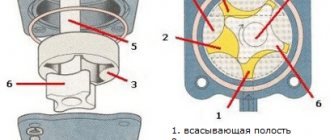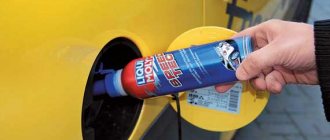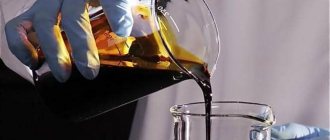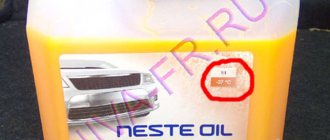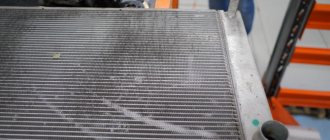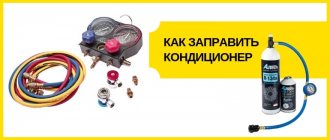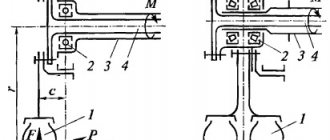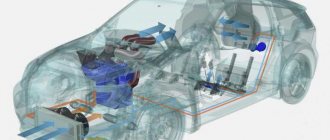Today, car enthusiasts are offered dozens of different additives for fuel, transmission and motor oil. Many of them have unpleasant stories associated with them. Instead of improving the operation of the car, the driver received the opposite - an increase in gasoline consumption, the appearance of carbon deposits on the spark plugs, clogged filters, etc. We have already looked at gasoline additives, among which there were both those that are strictly not recommended to be used, and those that are acceptable. Now we'll start looking at oil additives. We will talk about a metal conditioner - a product that, according to advertising, has only a beneficial effect on the engine and adjacent components.
What is it about
So, metal conditioner. His job is to modify the rubbing surfaces, or rather their properties. This should improve the operation of the mechanism and increase their service life. Metal conditioner must be added to the lubrication system of the internal combustion engine and gearbox. Optionally, it can be added to other hydraulic systems and even to the mentioned systems of various types of equipment: trucks, tractors, motorcycles, etc.
Conditioner (from the English “Condition”) is one of a small group of products that allow you to achieve the desired condition of metal surfaces. Compared to untreated metal conditioner, treated metal is less susceptible to dry friction, intense abrasion, etc. Air conditioners appeared in the 1980s and were first used in aviation. Over time, such chemistry began to be used in military ground transport. There is nothing surprising here: in combat conditions it will not be possible to fill in new oil or clean the oil paths. Over time, metal conditioners began to appear on the “civilian” market.
A reasonable question is: why is this air conditioner really needed if the problem of abrasion of parts is being solved by hundreds of car designers around the world? Let's figure it out.
Oil additives: pros and cons of their use
4
Sergey Perepelitsa | 02/02/2015
Every car owner is interested in ensuring that the heart of his car beats rhythmically and works as long as possible - without failures. Preventative repairs and regular oil and filter changes serve this purpose, but sometimes this is not enough.
Auto chemical manufacturers suggest using oil additives as one of the options for increasing engine life.
However, this is why the opinions of car enthusiasts are categorically divided: some consider them to be perhaps not a panacea, others consider them an absolute waste of money, and still others see them as more harm than good. Where is the truth? Let's try to figure it out.
Types of oil additives.
— additives created on the basis of solvents and detergents that prevent the formation of sediment.
Teflon-based oil additives.
PTFE oil additives are solid additives that manufacturers claim coat the moving parts in the engine and thereby protect it from wear.
The truth is that such oil additives cover not only moving parts, but also stationary ones (for example, oil channels, filters and oil receivers).
These same solid particles tend to accumulate in narrow channels, which interferes with the free flow of oil and forms an oil plug.
If your engine has begun to “eat” oil and expensive repairs cannot be avoided, but you are not yet ready for it mentally and financially, you can delay it by using PTFE-based oil additives.
If you need to add oil after every trip, which is very expensive and troublesome, then using an additive will save you from this need.
For how long is a moot point... According to experienced motorists, if we are talking about a foreign car, then the count goes to hundreds, or even thousands of kilometers. However, you must be prepared for the fact that repairs cannot be avoided in any case.
Zinc-based oil additives.
Additives with the main component zinc dialkyldithiophosphate (hereinafter simply zinc) claim to have high anti-wear properties. The principle of their operation is that the zinc present in the oil begins to react if metal-to-metal contact occurs in the engine, preventing abrasion of parts (for example, between the cylinder walls and piston rings).
For ordinary car enthusiasts who prefer a normal speed of around 100 km/h, these additives will simply be a waste of money.
But for the legendary NASCAR racing car, the use of oil additives is one of the mandatory conditions, without which the race cannot be won.
Additives to oil detergents.
Detergent additives are positioned as being created specifically for cleaning the engine: removing sediment and carbon deposits that appear on it.
Their main component is kerosene, and they also contain acetone, naphthalene, isopropanol, and xylene - so they ignite easily and are very flammable.
The main problem with their use is not to overdo it, since these additives not only remove harmful deposits, but also destroy the oil layer, which can lead to metal-to-metal contact.
Pleasant bonuses of using additives.
Thanks to the reduced friction force on the mating parts of the engine and increased compression, the driver receives many advantages that he will find very pleasant.
Reduced fuel consumption, easy starting at sub-zero temperatures, reduced risks of wear during cold engine starts, increased engine power (up to 5%), increased oil life, reduced exhaust toxicity - all this is very real to experience, although the question is for how long.
Oil additives - who is in favor?
Those who need maximum effect in a short time are definitely in favor of using zinc additives - we are primarily talking about professional racers. Due to a short-term decrease in the friction coefficient, an engine with such an oil additive develops more power, which, in fact, needed to be proven.
In all other cases, additives must be used competently and correctly in terms of their composition and be prudently prepared for the fact that they will not be able to provide your engine with the miracle of reviving youth for the rest of its life.
With or without oil additives, let nothing stop the car’s heart from beating long and rhythmically.
Happy travels!
Physics of the process
Friction of parts cannot be avoided. To ensure that the direct interaction of metal elements does not cause them serious harm, a lubricant is introduced. When there is lubricant in the gap between the elements, friction occurs only in it. But this is under ideal conditions. In practice, there are three lubrication modes:
- Hydrodynamic . In this case, friction is localized in the lubricant and does not seem to reach the metal parts themselves. Accordingly, their wear is minimal. If the lubrication regime had always been hydrodynamic, then various engine components would have served well for decades. This mode is considered the best;
- Borderline . In the gap there is only a thin layer of lubricant, not always exceeding one molecule. Parts wear out, but not as quickly as if there was no lubrication at all. This regime is not considered desirable;
- Mixed . Conventionally, this mode is called the most frequent. The point is that the places where friction of parts occurs are divided into hydrodynamic and boundary areas.
Finally, the most important thing: despite all its shortcomings, the boundary layer is the easiest to work with. Often its thickness is equal to one or a couple of molecules, but this is already enough to prevent wear of metal elements from occurring too quickly. A thin boundary layer is a real panacea for dry friction. This is exactly the layer that is created when using a metal conditioner.
Note that wear and tear on the engine and transmission cannot be avoided. The driver can only control the process. Firstly, do not load the units during the first 15-20 minutes after starting the internal combustion engine, since the oil is not fluid enough and does not cover the lubricated surfaces. Secondly, monitor the condition of the oils, since over time they become too viscous and become contaminated with combustion products, metal shavings, dust, etc.
Instructions for use
It is recommended to fill in metal conditioner smt2 after changing lubricants. When used with engine oil, transmission oil, or power steering fluid, it can be poured directly into the fluid compartment.
When adding an additive to grease or two-stroke oil, the two compounds must be mixed first.
There is no need to shake the bottle, the composition is transparent without solid particles. It is important to strictly follow the filling proportions.
Additive pouring proportions:
- When using the additive for the first time, pour 60 milliliters of the product per liter of oil into the engine. After the second use, the dosage is halved: 30 milliliters per liter of motor oil.
This algorithm is due to the durability of the protective layer being created. After the first pouring, the surface of the parts remains protected for a long time, however, an additional amount of additive helps fill the resulting local gaps.
- In the transmission - 50 milliliters of lubricant per liter of transmission oil is poured into the manual gearbox. 1.5 milliliters of additive per liter of oil is poured into the automatic transmission
- 50 milliliters of additive per liter of fluid is poured into the power steering
- It is recommended to fill the engines of garden equipment with 30 milliliters of additive per liter of two-stroke oil.
- Fuel for four-stroke internal combustion engines is filled with 20 milliliters of the product per 100 liters of liquid.
- An additive is added to the bearing units in a ratio of 3 to 100
It is not recommended to exceed the concentration of the additive in the liquid. This will not lead to an increase in the positive effect of using the material, but may cause overheating of the mechanisms and the formation of sediment on the parts.
Advantages of metal conditioner
The use of drugs from the “Metal conditioner” group is useful for the following reasons:
- The likelihood of oil starvation is reduced;
- The service life of parts subject to friction is significantly increased. Often twice, sometimes three or four;
- The friction force decreases;
- Scuffing, intense abrasion, etc. occur less frequently at high temperatures, as well as when the vehicle is moving at high speeds.
As practice shows, adding a conditioner to engine oil can reduce toxic emissions and slightly reduce fuel consumption. The drug can also be added to the lubricant of gearboxes and hydraulic systems .
This allows not only to prevent dry friction, but also to reduce the noise level, improve the operation of the mechanism, and neutralize vibrations. A serious advantage of conditioners is that they do not impair the lubricating properties of oils. Simply put, this is an absolutely safe additive.
Disadvantages of using antifriction additives
Elimination of extraneous engine noise using additives.
Additives for engine oil to eliminate knocking of hydraulic compensators There are also two disadvantages of using antifriction additives. The first is that in order to restore the working surface and maintain it in normal condition, the additive must be constantly present in the oil in the proper concentration. As soon as its value drops, the work of the additive immediately stops, and in addition, this can lead to significant clogging of the oil system.
The second disadvantage of using antifriction additives is that the rate of oil breakdown, although reduced, does not stop completely. That is, hydrogen from the oil continues to flow into the metal. This means that hydrogen destruction of the metal takes place. However, it is worth noting that the benefits of using antifriction additives are still greater. Therefore, the decision on whether to use these compounds or not rests entirely with the car owner.
In general, we can say that the use of antifriction additives makes sense if they are meant to be added to inexpensive or medium-quality oil. This follows from the simple fact that the price of anti-friction additives is often high. Therefore, in order to extend the life of the oil, you can buy, for example, inexpensive oil and some kind of additive. If you use high-quality motor oils, for example, Mobil or Shell Helix, then using additives with them hardly makes sense, they are already present there (although, as they say, you can’t spoil the porridge with oil). So whether to use antifriction additives in the oil or not is up to you.
The method of using additives for the vast majority is identical. It is necessary to pour the composition from a canister into the engine oil.
In this case, it is important to observe the required volume (usually it is indicated in the instructions). Some formulations, for example, Suprotec Active Plus, need to be refilled twice, in particular at the beginning of the oil’s operation, and after driving about one thousand kilometers
In any case, before using any additive, be sure to read the instructions for its use and follow the recommendations given there! We, in turn, will provide you with a list of popular brands and a brief description of their action so that you can choose the best anti-friction additive.
Existing types of metal conditioners
The drugs in question began to be actively developed back in the Soviet Union. The work continued after the Union members became independent states. This had a serious scientific and technical basis. Thus, the current market for metal conditioners is rich in domestic additives. A car enthusiast should understand both domestic and foreign products.
To navigate the range of drugs, it is worth remembering that they are intended for use in:
- Gasoline, diesel engines;
- Manual transmissions;
- Automatic transmissions;
- Hydraulic systems, such as power steering.
It is worth considering that the composition of air conditioners is never indicated in full - this is a trade secret. Nevertheless, the principle of operation of the drugs and the types of their chemical compounds are identical. The main difference lies in special additives, additional additives and concentration. As a rule, the manufacturer indicates what additives have been added and whether the air conditioner contains revitalizants. Additional components are needed not so much to neutralize dry friction, but to restore the metal surfaces of transmissions and internal combustion engines with high mileage.
Engine additive rating
Choosing the best additive for your engine requires a responsible approach. Among the large assortment you can find products designed for different types of engines and their different conditions. By comparing the properties of the drugs declared by the manufacturer, as well as reviews of engine additives, you can identify the TOP best.
Applicants were considered according to the following criteria:
- Purpose by engine type, service life;
- Type of engine fuel used;
- Compound;
- Manufacturer's warranty;
- Consumption;
- Price.
From several dozen additives, the best drugs were selected based on a combination of indicators, as a result of which they were grouped by purpose and properties. The rating discusses in detail the advantages and disadvantages of each product.
Best Air Compressors
More information about the compositions
There is still a veil of secrecy about the composition of metal conditioners today, but we already know about some of the components. The basis of the drug is a halogenated hydrocarbon derivative. Simply put, these are hydrocarbons that carry one atom of an element from the halogen group, and sometimes several such atoms. The most popular air conditioners contain chlorine.
reasons why halogens . The main one is this: halogens, which include iodine, bromine, fluorine, astatine, have the highest oxidizing properties. For example, chlorine, upon contact with a metal surface, simply “sticks” to it, having previously entered into a reaction with the metal, which results in the formation of chloride. In chloroparaffins (the basis of a metal conditioner), the drug molecule as a whole “sticks” to the surface. The process of “sticking” of certain compounds to metal is called chemisorption in science.
Note that chloroparaffins cannot form a stable protective layer on the metal. For this reason, the conditioner includes traditional surfactants. Working in tandem, the chemicals and surfactants continually break away from the metal and contact it again. An extremely stable boundary layer is formed. But that's not all! Air conditioners contain a small amount of sulfur, which, when heated to 200 °C and above, forms another protective film. Due to this, the air conditioner remains effective even when the vehicle is operated in difficult conditions.
Additives for improving the properties of base motor oil
The so-called viscosity, detergent, antioxidant and other compounds cannot be called restorative, since additives in oil for engine restoration usually create a special protective layer on parts. It turns out that these products can be considered rather preventive. The main task of viscosity compounds is to change the viscosity of the base oil for better fluidity and pumpability in the engine at low temperatures, as well as stability of the oil film at high temperatures.
As for antioxidant additives, such solutions extend the life of the engine oil and allow it to maintain its beneficial properties throughout its entire service life, that is, until a scheduled replacement. The composition contains dithiophosphates or phenol substitutes, which are a powerful antioxidant. The additive actually neutralizes the products of oxidative reactions in the oil.
Detergent products are designed to enhance the cleaning properties of the base oil. As you know, in places of strong friction and heat, the engine becomes most dirty. Additives do not allow new varnish, resin and other deposits to accumulate on parts, and also wash off existing ones as effectively as possible. The composition contains calcium salts, magnesium salts, etc. The use of such an additive allows you to reduce the amount of tar deposits and sludge in the engine.
Anti-corrosion additives for the engine should also be noted. Getting an account on some bookmaker sites is quite difficult, this is especially true for legal bookmakers that comply with the law. But registration on Fonbet is quite easy and within 10-15 minutes you receive a profile ready for betting. As the name implies, their task is to prevent the start of the process or slow down existing corrosion on internal combustion engine parts. The appearance of rust in the engine is due to the fact that water enters the unit along with fuel and other means. Oxygen also enters the engine, and in parallel with this, various oxidative processes occur. The action of the additive, which contains alkaline, oxide-alkaline sulfates, fatty acids and other active components, allows you to create a protective film to prevent corrosion.
How to use metal conditioner
Owners of any car can use the drug. As practice shows, metal conditioner pays off after 2000-3000 kilometers . Further - complete savings on fuel, lubricants, repairs, etc. So buying an air conditioner is justified whether you have an old car or a brand new expensive foreign car.
The drug is sprayed or poured (depending on the packaging) according to the manufacturer's instructions into the transmission or internal combustion engine. When adding to oil, the volume of lubricant in the system must be taken into account. Here the manufacturer will help the car owner: on the packaging there is almost always a calculation of the optimal amount of the drug for pouring/spraying.
We recommend using the conditioner again after you change the oil. This applies to both transmission and engine lubrication. Despite the fact that the boundary layer of the conditioner is very stable, in the absence of the drug in the lubricant, the system will gradually be cleared of it. In practice, the dose of air conditioner is sufficient for the entire service interval.
The principle of operation of engine oil additives, what manufacturers promise
Regenerative additives for engine oil
Natural engine wear should be understood as an increase in gaps, the accumulation of scratches, small chips, etc. on the surfaces of parts. As a result, power is lost and fuel and oil consumption increases. Also, deposits and contaminants accumulate in the engine during operation.
As for additives, engine metal conditioner, antifriction, antiwear and other additives perform different tasks. So-called friction modifiers actually “grind” surfaces. Simply put, along with the additive, a whole package of soft mineral components gets into the oil. As a result, the surfaces become smooth and somewhat leveled. Moreover, by penetrating into the upper layers of the metal, the additive creates a metal-ceramic composite layer.
Conventionally, this can be compared with the process of sealing cracks and flaws with ordinary putty. Only instead of putty, soft metals (copper compounds, lead, silver) or polymers are used. Let us also add that there are also compositions whose task is not to “seal”, but simply to reduce friction. In this case, such additives may be based on graphite or molybdenum disulfide.
Also, a metal surface covered with scratches can be treated with acidic or alkaline compounds. As a rule, metal conditioners perform this function. In parallel with this, such treatment allows for a reduction in wear, since the chemical effect allows the metal particles that are separated from the surface to be returned to their place. Moreover, these particles settle in the form of ions.
Brand tour
There are actually not so many representatives of the “ Metal conditioner A significant number of drugs on the market were produced by domestic companies. They are in no way inferior to foreign ones, and in some ways they even surpass them. In an auto chemical store, we recommend giving preference to air conditioners from the following companies:
- XADO (Ukraine) – a time-tested company today occupies a huge niche in both the domestic and foreign markets;
- Energy Release (USA) is one of the leading manufacturers with a strong scientific base. Offers excellent anti-friction conditioners that are easily identified by the blue "ER" logo. American drugs can be sold in both small containers and large canisters;
- Fenom (Russia) is a renowned manufacturer whose products are the best analogue of the American ER . If you ask at an auto chemical store what the difference is between them, the manager will say that only in the pricing policy and the country of production;
- Hi-Gear (USA) - the company is known primarily for the creation of the breakthrough synthetic conditioner SMT2, which is currently the best representative of the entire group of products.;
- Liqui Moly (Germany) - the company cannot boast of a wide range of automotive metal air conditioners, however, the products are of high quality. Most drugs are sold in the form of aerosols. German air conditioners form a very resistant film.
If you do not have experience using metal conditioners, we advise you to pay attention to SMT2 , Fenom and Xado preparations. Of the expensive, but very high-quality drugs, it is worth noting Maximum and New Car from the company XADO. It's also worth trying SMT2521 or the cheaper SMT 2507.
Conclusion
Metal conditioner can be called a simple and very effective tool that can significantly extend the life of the internal combustion engine, transmission and individual hydraulic units. Unlike many oil and fuel additives, air conditioning is safe for the car. Its effectiveness has been confirmed by many tribological studies. In addition, metal conditioners are still actively used in aviation, military equipment, and racing vehicles. We advise you to pay attention to inexpensive drugs from Energy Release and evaluate them in practice. If your expectations are justified, try the more expensive Liqui Moly and Hi-Gear (SMT) - their effectiveness is even higher.
Spare parts for Mazda 2
Hood lock
1.3 MZR ZJ-VE
Purpose and areas of application of the additive
The SMT2 additive is produced by the famous American company Hi-Gear.
It replaced SMT auto chemical products. SMT2 is not just an addition to the lubricant, but is positioned as an independent product. Oils and liquids act as a transporter for the active components of the additive.
The principle of operation of a metal conditioner comes down to the following: the additive creates a stable film on the mating elements, which significantly reduces the coefficient of friction of the surfaces. This film has a high load-bearing capacity and increases the power of the mechanism.
The created durable protective layer prevents scuffing and surface damage.
Smt 2 has universal application: it is suitable for pouring into the engine, into the gearbox (both automatic and manual), into the power steering, into transfer cases, in general, into all mechanisms where there is lubrication.
